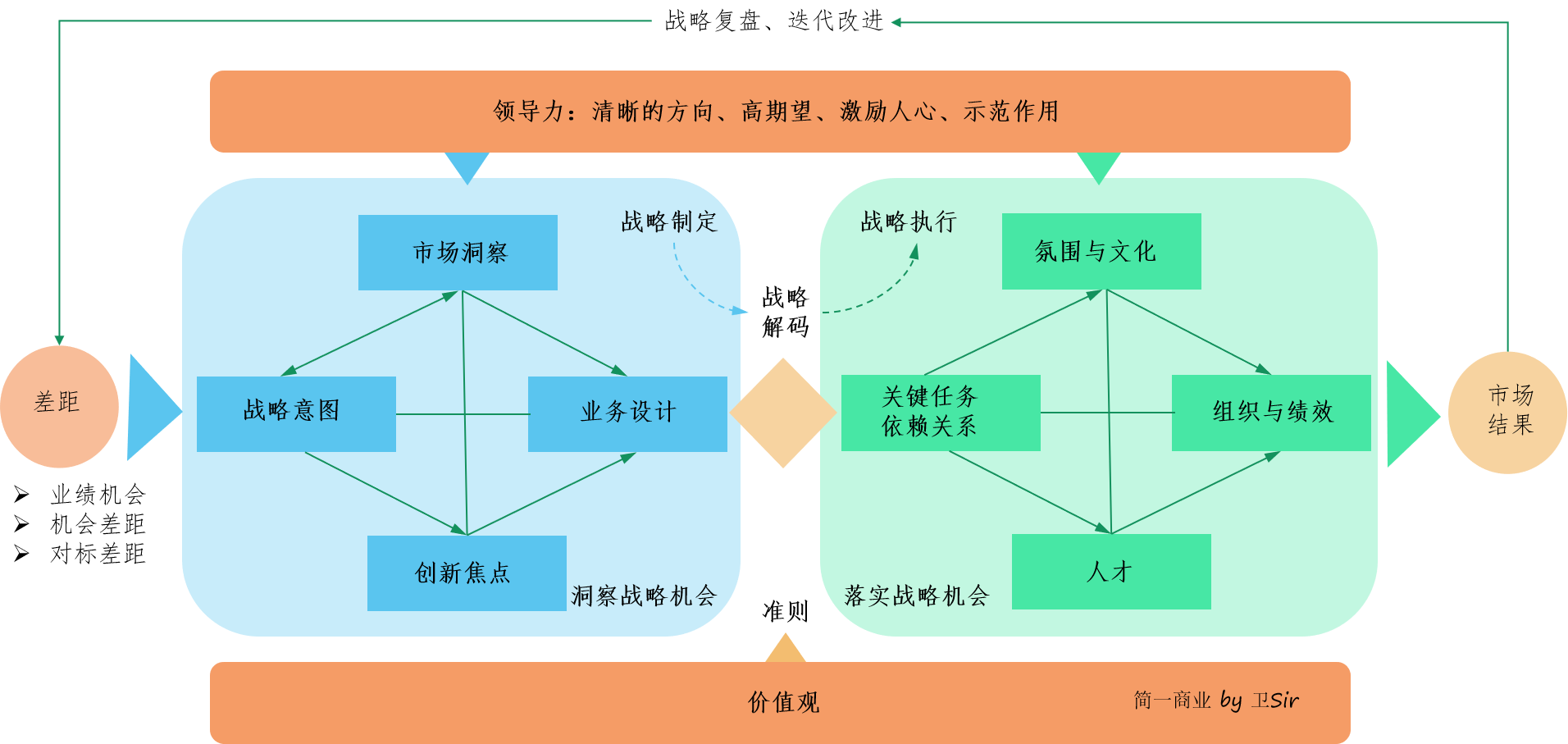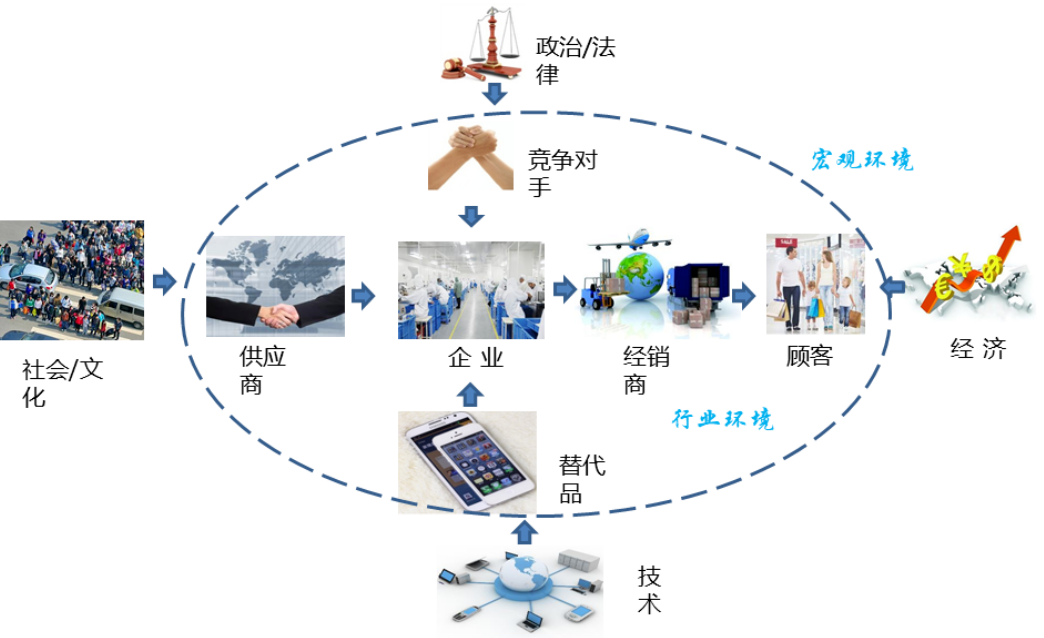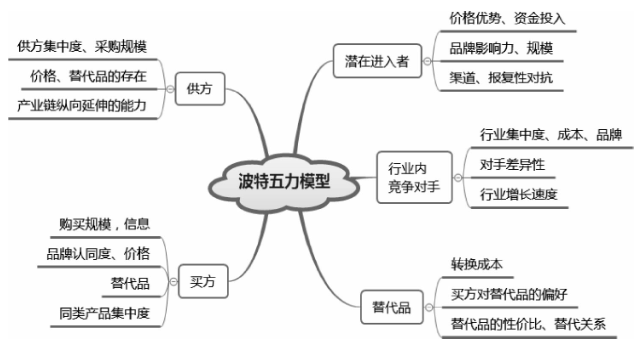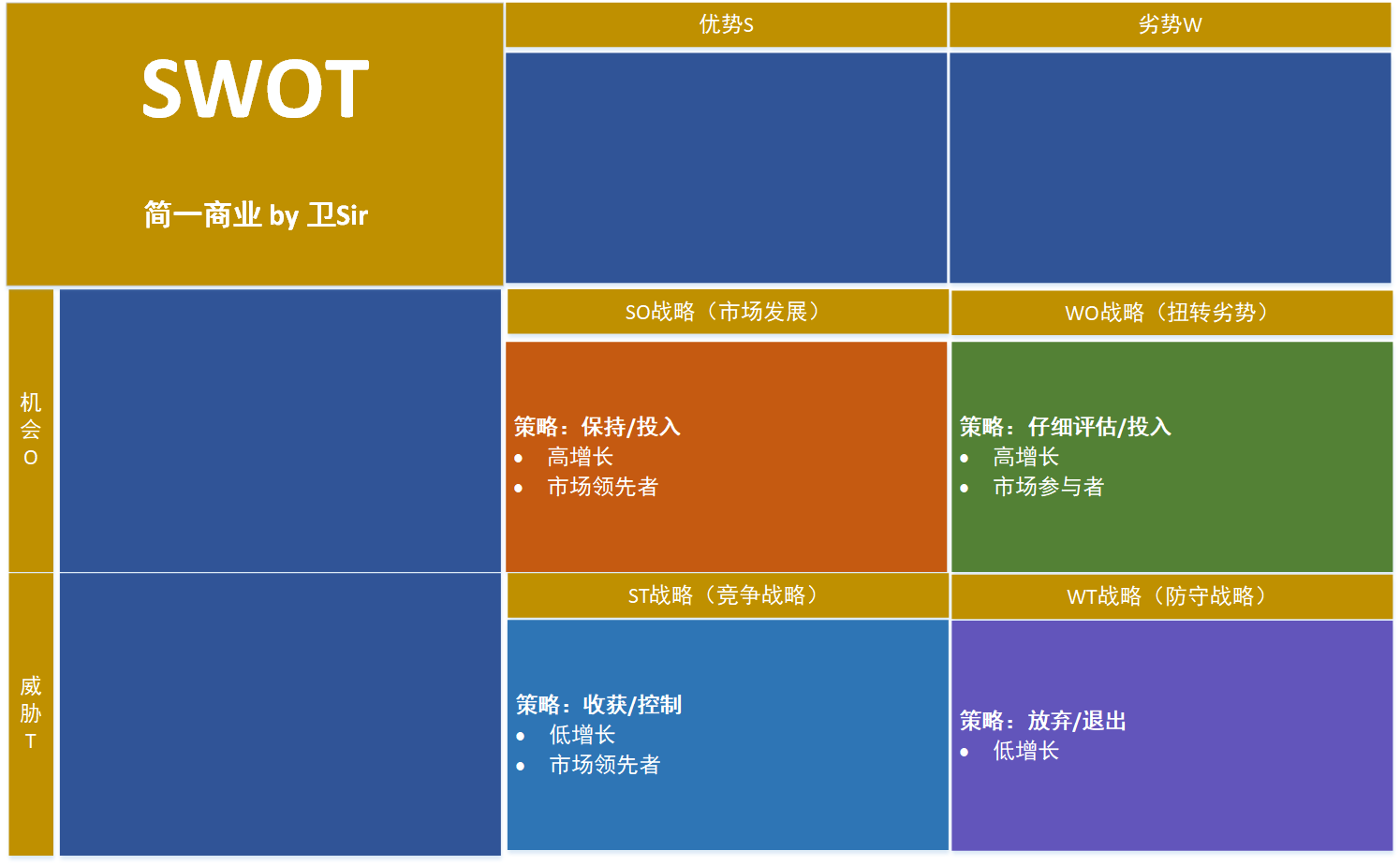Editor's Guide: what is BLM? BLM is essentially an element model, which shows the core elements of business strategic planning and follows certain MECE principles. It and mm are summarized by IBM. They come down in one continuous line, but there are also differences. The author introduces the knowledge about BLM. Let's learn it together.

If you have read the articles of Sir market management series, you may find that many contents of BLM actually overlap with market management.
In order to make you better understand the content of this article, let's briefly analyze the differences and connections between BLM and mm (market management). BLM and mm (market management) are both summarized by IBM, which can be said to come down in one continuous line, but they also have obvious differences:
- Different structural forms
- The background and starting point of the two are also different;
- There are also obvious differences in the content and logical order involved.
In essence, BLM is an element model, which shows the core elements of business strategic planning. Following certain MECE principles, we can make planning without emphasis or omission. However, the element model only considers the static structure and level, but ignores the sequential relationship between tasks, which will lead to problems at the implementation level.

For example, your company has launched an online software, which has been online for a period of time, and the data has performed well. Some time ago, the website revised some pages and added many functions and templates.
Then you find that the growth of users has stagnated since the revision. What's going on? If you only do static analysis, you may come up with solutions such as continuing to increase advertising and rearrange pages.
However, for a new user, will he use all functions and all pages when he comes into contact with the software for the first time? No, he will only enter the login link first and see the welcome page and login page.
Users can only use all the following operations after logging in. However, after the website is revised, the loading speed of the login page has been greatly reduced. It used to take only a few hundred milliseconds, but now it has become a few seconds. It is this speed that makes many users lose patience when opening the website, and then leave directly.
Therefore, when facing the process problems with time sequence or dependency, a process model such as mm is needed.

1、 What are the differences and connections between BLM and mm?

As can be seen from the above figure, most of the contents are basically consistent or relevant. For example, market insight is usually referred to as market analysis and evaluation. Strategic intention can be understood as the design of strategic objectives that we often talk about.
BLM adds three difference analysis and strengthens the elements of organization, talent, culture and atmosphere. The contents of market segmentation, product planning and management business plan in mm are not included in BLM.
IBM separates mm from IPD system:
- Divide the contents of the first three steps of mm into four strategic elements: strategic intention, market insight, innovation focus and business design;
- Referring to tashmann's organizational change model, the contents of the fourth and fifth steps of MM related to action plan, organization and process, personnel and skills are summarized into four implementation elements: key task, organization, talent, culture and atmosphere;
- It emphasizes that the strategy is inspired by the performance gap, opportunity gap and benchmarking gap, and closes the gap through implementation, so as to summarize the BLM framework and relevant elements.
Although the application of mm to establish the company's strategic planning and business strategic planning has strong operability, some links will be biased, the key elements are not prominent, and the application of BLM has the problem of insufficient landing. Therefore, both Huawei and the consulting industry combine BLM with mm.
2、 Eight steps of strategic planning based on BLM and MM
The eight step method follows the strategic planning framework and key elements of BLM, and applies MM method to combine or supplement several key steps. The following is a brief description of the eight steps:
1. Three difference analysis
Including performance gap, opportunity gap and benchmarking gap, as the input and starting point of strategic planning.
At this time, we mainly focus on the analysis of performance gap, because we have not done market insight, so the identification of opportunity gap and benchmarking gap should be done after the end of market insight.
2. Strategic intent
The gap arises because we cannot achieve the desired goal, that is, the strategic goal.
The design of strategic objectives comes not only from the decoding of the company's overall strategy, but also from the business leadership's expectations for the future, mainly including vision and mission, medium-term strategic objectives and short-term strategic objectives.
3. Market insight
Bridging the performance gap can be achieved by strengthening strategy implementation. To bridge the opportunity gap, new business design is required, and the new business design needs to take market opportunities and customer needs as input.
Market insight is to explore opportunities to achieve future strategic goals, which usually includes 5 perspectives: environment, industry / trend, market / customer, competition and self.
Finally, summarize and identify strategic opportunities, including the application of MM market segmentation method in the link of looking at the market / customer.
4. Innovation focus
Apply mm portfolio analysis method (including span analysis and fan analysis) to form business portfolio planning after decision-making, clarify the fields, methods and contents of product / service innovation, business model innovation and operation innovation, and further identify strategic topics that need in-depth research for innovation.
5. Business design
Making up the opportunity gap requires innovation in business design, including developing new products, implementing new business models, adopting new competitive strategies, etc.
Business design can help us design business models that can seize market opportunities and achieve strategic objectives, as well as product portfolio strategies that should be adopted.
The foothold of strategic planning in business design, including customer selection and value proposition, profit model, strategic control point and activity scope, reflects the competitive strategy of the business.
6. Target market strategy and product planning (business strategy and business plan)
This step is a key link supplemented according to the MM method, so as to implement the strategic planning in the target market and new product innovation.
Business design is the output of the strategic level, while the organization and talents supporting the implementation of the strategy are the requirements of the tactical level.
From strategy to tactics, strategy must be refined in the middle, including R & D strategy, procurement strategy, production strategy, marketing strategy, etc. in this way, the whole strategic planning process is a process of gradual refinement from strategy to strategy, and then to tactics. Without the formulation of business strategy and business plan, strategy and tactics will be divorced in most cases, Such a strategy is not enforceable.
The planning team should formulate a detailed business plan for each market segment and output the product development plan of each market segment, then integrate the business plan and product development plan of all market segments into the business plan and product roadmap plan of the whole product line, and output the demand of the product line for human resources and key technologies.
- Formulate the target market business plan (MSP) for the target market, including the strategies and plans of six business elements: product, price, channel, integrated marketing (IMC), delivery and service, and identify key tasks or action plans.
- For new products, through product planning activities, form new product development project portfolio and road sign planning in the next 3-5 years.
7. Key tasks and execution strategies
Business design and business plan need to be decomposed into annual key tasks and performance appraisal KPI indicators through strategic decoding.
To coordinate the action plans of various departments and the scheme design of strategic deployment through strategic deployment, we need to respect the principle of reciprocity in terms of responsibility, power and benefit.
According to the overall strategic requirements of the company, the business design of each business unit (BU / PL) and the key tasks or action plans of the target market, integrate the key tasks at the company level, business unit level and functional area level (including business growth initiatives and capacity-building initiatives), and further clarify the implementation strategy from the three elements of talent, organization and cultural atmosphere.
8. Organizational capacity support
The achievement of key tasks and KPIs requires the support of organizational ability. Strategic planning tools provide the thinking direction of organizational support from three aspects: values and culture, organization and process, resources and talents.
Through systematic thinking, this paper analyzes the root causes of insufficient organizational ability, and puts forward directional organizational change.
Let's review the whole and introduce the market insight in detail.
3、 What is market insight?
Whether and how the vision and objectives in the strategic intention can be realized need to find the basis from the market; The lack of market insight will have a negative impact on business design, because the information or assumptions we use may be wrong or flawed.
The purpose of market insight is to analyze and judge the trends and trends of the external market, as well as the resulting opportunities and threats. At the same time, we need to combine the objective understanding of our own ability to segment the market and find our target market.
Market insight is similar to the internal and external environment analysis in the traditional strategic planning model. Its main content includes the analysis of macro environment, industry trend, customers, competitors and internal resource capacity.
The purpose of building market insight is to:
- Clearly know the future opportunities and the challenges and risks that the enterprise may encounter;
- Understand and explain what is happening in the market;
- And what these changes mean to the company;
- Lay a solid foundation for the following strategic planning.
Just like in Longzhong Dui, Zhuge Liang helped Liu Bei locate Jingzhou and Yizhou, which are the target markets that can make efforts at the current stage.
Market insight focuses on change, that is, the trend of "value transfer", and the impact of change on business design.
Market insight requires reasonable and bold assumptions about the future. For example, Toyota's planning includes assumptions about the social aging rate in the next 10, 20 and 30 years, the urbanization rate, the impact of various diseases, life expectancy per capita, the rise of sea level and so on, and analyzes the impact on Technology, customers and manufacturers under this assumption.
Market insight can be obtained from three perspectives:
1. Look at the macro and the general trend, including the general trend of the whole macro environment and the general trend of your industry
When looking at the general trend, there are two most important things:

The first is the macro trend. Through the analysis of changes in the macro environment, we can identify its impact on the whole market.
The macro environment mainly includes politics, economy, society, science and technology, environment and Law (including regulation). The commonly used tool is PESTEL:

P in PESTEL represents politics, that is, the political environment, which affects various industries and even everyone's life to a great extent;
E represents Economics, one belt, one road, the other is the growth of GDP, the supply side reform, the industrial structure adjustment and the one belt strategy.
S stands for society. For example, a very obvious feature of China's population flow is the agglomeration effect. The population is constantly gathering in some central cities.
In addition, it also includes the impact of aging and second child, which have brought great changes to China's social structure. It is precisely because of these changes that the rigid needs of society have changed.
The last t stands for technology. The technologies that will have the greatest impact on the macro market environment in the future are big data and artificial intelligence. It not only plays a role in the technological progress of various industries, but also affects the whole industry.
What is the second aspect of the general trend? It depends on the changes in your industry.
These changes include what changes have taken place in the value chain of the industry? Are the high-value areas of the industry different? What about the size of the market and future growth expectations? These analyses will inevitably affect the judgment of industry opportunities and threats.
The commonly used industry analysis tool is Porter's five forces model:

2. Looking at customers, relatively micro
Looking at customers, more refers to the analysis of customer pain points.
This aspect needs to be looked at in detail. Who are you serving today? Why is he satisfied with you and why is he dissatisfied with you? Who else can you serve in the future? What pain points does he have? What are the changes in the preferences of current and potential customers?
These changes in pain points and preferences may represent a new opportunity and even breed a new industry that has never appeared in history.
For example, bike sharing and special car sharing, which are very popular in previous years, are caused by the difficulty of taking a taxi and users' preference for mobile Internet.
In the era of mobile Internet, the business philosophy of customer experience as the center is highly emphasized. The understanding and grasp of customer use scenarios is the core of enterprise operation. Customer analysis can be started from the following three aspects:
1) Personalized demand
More and more attention has been paid to the "customer-centered" personalized service. Analyze the personalized needs of customers, take corresponding measures for such needs, and analyze the different effects of different customers on enterprise benefits, so as to make correct decisions.
Truly understand the pain point needs of customers and what value enterprises can bring to customers.
2) Customer behavior
Through customer analysis, enterprises can use the collected information to track and analyze the information of each customer, not only know what kind of customers have what kind of needs, but also observe and analyze the impact of customer behavior on enterprise revenue, so as to optimize the relationship between enterprises and customers and enterprise profits. Distinguish key customers and strategic customers.
3) Customer loyalty
Customer loyalty is a comprehensive evaluation value based on the trust, communication frequency, service effect, satisfaction and the possibility of continuing to accept the service of the same enterprise, which can be quantified according to specific indicators.
Maintaining old customers is more economical than seeking new customers. Maintaining continuous communication and long-term contact with customers and maintaining the emotional bond with puqiang consumers are new means of competition between enterprises.
The competition to consolidate this kind of customer loyalty is hidden, and the competitors can't see any strategic changes.
3. Look at competitors
Look around you. What are the people competing with you, especially the main players who determine the market pattern, doing; Compared with them, where are we strong and weak? To help us gain market insight.
Through the analysis of the strategy, business design (business model), operation status, competitive advantage, resource investment and competitive strategy of the main competitors, identify the evolution of the competitive pattern and predict the changes of the competitive situation.
Internal resource capability analysis is to analyze the advantages and disadvantages of the company's resource capability combined with the key success factors of the industry.
What needs to be considered is our position in the overall competition pattern and what is our long board? What are our weaknesses? What was the reason for past success? How can we continue to succeed in the future?

From these three perspectives, we can see the trend and the opportunities and threats behind the trend, and then we can have insight.
These market insights ultimately help us make market choices and strategies. We should be familiar with SWOT, a classic tool whose vertical axes are o and T:
- O stands for opportunities, which refers to those trends that increase the attractiveness of our industry;
- T stands for threat, which refers to those trends that make our industry less attractive.
The horizontal axis of SWOT is w and W, which means that in terms of the key success factors of an industry, compared with the opponent, our advantage is stronger than the opponent, that is, s, and our disadvantage is weaker than the opponent, that is, W.
Through the SWOT model, the big cake of a market is divided into four pieces:

- One is called so market, which means that the opportunity falls into your advantage;
- When the opportunity falls into your inferior field, it constitutes your wo market;
- The threatened base areas constitute your st market;
- And threaten your previously weak field, that is your wt market.
Therefore, the whole market is divided into four parts, and different methods and strategies need to be used for different market segments.
Taking the classic pair of Longzhong as an example, what opportunities did Zhuge Liang help Liu Bei find? There are two opportunities. The first is to look at the macro environment. There are countless people who connect counties across states. It represents a great opportunity to dominate the world.
The other is from the analysis of users' pain points that the people of Jingzhou and Yizhou want to change.
What advantages does Liu Bei have? He is a Han clan. In fact, he is the advantage of the brand. He is a good brand to be the boss.
What are his weaknesses? Strength is his disadvantage. The great opportunity to dominate the world still needs to fight strength in the end, so this opportunity falls into his w field, that is, his disadvantage field.
What strategy did Zhuge Liang put forward? If you are weak, you can't compete with others. You must form an alliance. Only by forming an alliance can you occupy a place and have a chance in the future.
In the wo market, we can only rely on alliance and penetration to become a market participant.
Liu Bei has brand advantages. At the same time, Jingzhou Yizhou people want to change and want to change the boss, so Jingzhou Yizhou has become the target market he can focus on immediately.
What goals and strategies do we usually have in the so field? Usually, we have to be the absolute market leader and even inspire ourselves to fight the war of annihilation. Specifically, we have to take Jingzhou and Yizhou without paying back.
Therefore, in the link of market insight, the core is that we transform the war an enterprise wants to fight in the market into four different battles.
For each campaign, we can adopt different methods. In the so market, we often require high growth, usually three times the growth rate of the industry. If the industry is 10%, we need 30%.
In the wo market, we must focus, choose, not all, choose a market segment to cut in, concentrate superior forces, achieve rapid growth, and then gradually penetrate.
In the st market, others are encroaching on our base area, and there are not many opportunities for growth. We can invest less resources to ensure that the share remains unchanged and is equal to the growth of the market.
In the WT market, you can choose to exit strategically and invest resources in the field of opportunities.

Therefore, after SWOT analysis, we can formulate different strategies and objectives for different market segments.
refer:
- Public information of BLM business leading model
- Mm market management public information
- Consulting – wanwei zhanzhuo, Hanjie, etc
#Columnist#
Wei Sir, official account: Jane one business, everyone is a product manager columnist. Pay attention to the field of intelligent hardware, be good at market analysis, product design and development, production management, etc., and like reading and mountain climbing.
This article is originally published by everyone who is a product manager. Reprinting is prohibited without the permission of the author.
The picture is from pixabay and is based on cc0 protocol.









